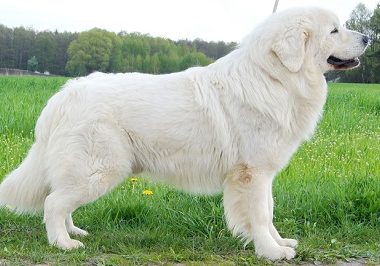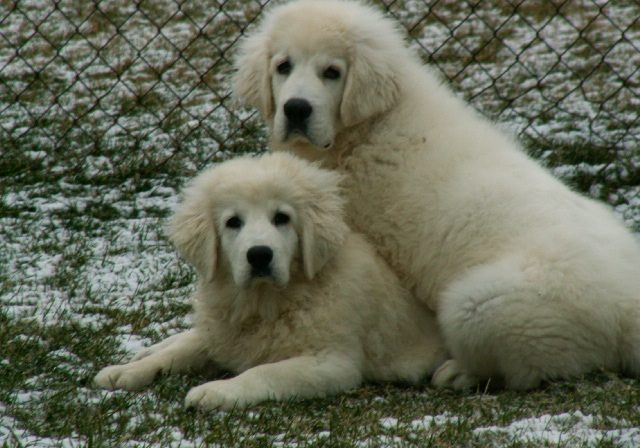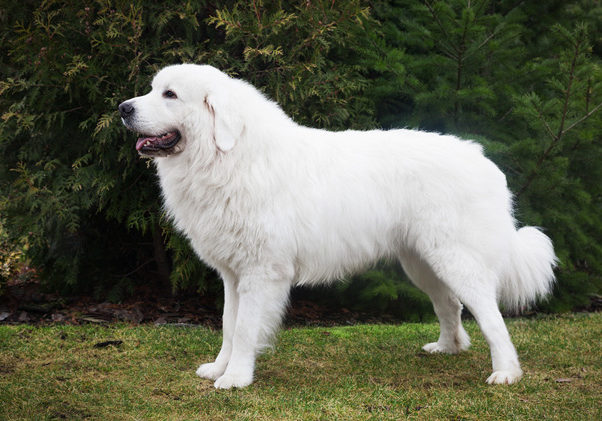Breed Standard
The Polish Tatra breed standard set the defining traits for this rare breed. Originally drafted in 1988, the standard has since been updated in 1997 by Dr. Paschoud.
Breeder Directory
The PTSCA does not endorse or recommend any specific breeder. We provide this breeder directory as a convenience to those seeking out Polish Tatra pups. We strongly urge you to research before committing to a pup purchase.
Questions to Ask
We’ve put together a list of common questions we urge you to ask when interviewing a potential breeder. Please click the link below to review and print a copy.
History of the Polish Tatra
The Podhale, where this breed originated, is a small region in southern Poland, against the Tatra range, which are the highest peaks in the Carpathians. The Podhalanski’s history follows that of similar dogs from Czechoslovakia, Hungary and Rumania, all of which trace back to the white guardian dogs of the Eastern World and brought west by the Phoenicians.
Outside interest in the handsome dog, which had been guarding sheep in the mountain meadows for centuries, began in the middle of the 19th Century when mountain climbing became popular.
Tatras were developed as working dogs. They serve a dual purpose and act as both a herding dog and also a guardian dog. Its imposing attitude and beautiful appearance make it a good companion dog. Tatras generally do not attack predators but stand their ground, and stay with their charges (be it sheep, goats or their human charges).
The Tatra is a large dog, often reaching 24 – 28 inches and 100 to 130 pounds. He has heavy bone, a massive body and is powerfully muscled. His profuse coat is generally pure white. They are hardy strong dogs able to work on a minimal diet and withstand cold, harsh temperatures as well as hot, dry heat. The Tatras require early socialization and then throughout its entire life.
World War II brought the breed to the brink of extinction. This is truly a breed that “refused to die”. The Polish Kennel Club worked to re-establish the Tatra Dogs following the War. By the 1960’s the Federation Cynologique International (FCI) reinstated the breed.
The Tatra is one of the rarest dogs in North America.
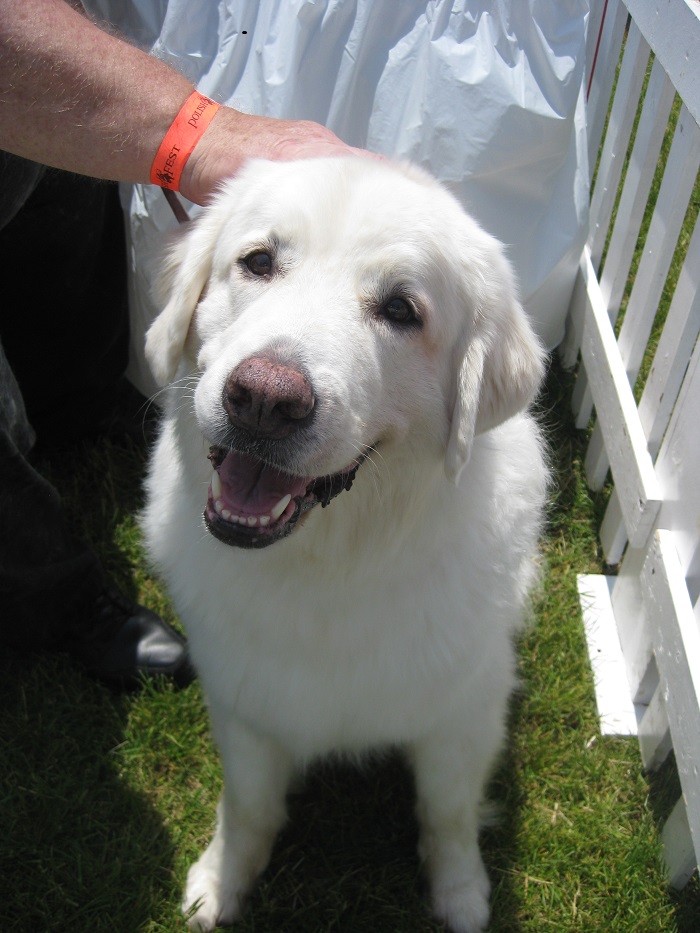
Polish Tatra Breed Standard
 FCI-Standard No 252 / 14.07.1997 / GB
FCI-Standard No 252 / 14.07.1997 / GB
TRANSLATION : Brought up to date by Dr. Paschoud.
Tatra Shepherd Dog
(POLSKI OWCZAREK PODHALANSKI)
ORIGIN : Poland.
DATE OF PUBLICATION OF THE ORIGINAL VALID STANDARD: 08.06.1988
UTILIZATION: Herder and watchdog. Its imposing attitude and beautiful appearance make it a good companion dog.
CLASSIFICATION F.C.I.: Group 1 Sheepdogs and Cattledogs (except Swiss Mountain-and Cattledogs). Section 1 Sheepdogs. Without working trial.
GENERAL APPEARANCE: Of strong and compact build giving the impression of stamina and mobility.
IMPORTANT PROPORTIONS: Rectangular in shape, the length of the body of males being a little shorter than that of bitches.
BEHAVIOUR/CHARACTER: Temperament calm, intelligent and alert.
HEAD: Lean, in good proportion to the body, carried at medium height both in
movement and standing.
CRANIAL REGION:
Skull: Seen in profile slightly rounded ; the frontal groove is shallow.
Stop: Distinctly marked, but without abrupt break.
FACIAL REGION:
Nose: Black, of medium size, with the nostrils wide open.
Muzzle: Strong, gradually tapering ; its length is slightly greater or equal to the length of the skull. The nasal bridge is broad.
Lips: Desirably taut and well fitting ; the edges of the lips should be dark.
Teeth: Strong, regularly set. Scissor bite, pincer bite accepted.
Eyes: Medium size, expressive, set slightly slanting ; the iris is dark brown ; the eyelid rims are dark.
Ears: Set on at the height of the external angle of the eyes or a little higher, medium
length, rather thick, triangular, well furnished with hair ; the front edge of the ear is in
slight touch with the head ; auricle mobile.
NECK: Of medium length, muscular, without any dewlap, with a profuse mane ; the
upper line of the neck is higher than the topline of the body.
BODY: Long and massive.
Withers: Distinctly marked, broad.
Back: Level, broad.
Loins: Broad , well coupled.
Croup: Oblique, slightly sloping.
Chest: Deep.
Ribs: Oblique, rather flat.
Belly: Slightly tucked up.
TAIL: Set on not too high, carried below the topline ; when excited carried above the
topline, but not curved ; hanging, it reaches the hock ; the tip of the tail may be
slightly curved.
LIMBS:
FOREQUARTERS: Forelegs muscular, with plenty of bone, but not too heavy ; seen from front straight and parallel.
Shoulder-blade: Slightly sloping, well adapted to the body.
Pastern: Slightly sloping forward.
Feet: Compact, oval in shape like a relatively big fist. With hairs between the toes.
Pads strong, hard and dark ; nails strong, blunt and dark.
HINDQUARTERS: Viewed from the rear hind legs vertical ; seen from the side slightly set backwards, moderately angulated.
Hock: Seen from the side vertical.
Feet: Like the forefeet.
COAT:
HAIR: On head, muzzle, frontpart of forelegs and on the hindlegs from the hock
downward the hair is short and dense. The neck and the body are covered with long, thick, straight or slightly wavy hair, hard to the touch. Undercoat profuse. On the neck a rich ruff ; the thighs are covered with profuse, long hair ; on the tail hair also profuse, forming a flag.
COLOUR: Uniformly white ; little cream coloured patches are undesirable.
HEIGHT:
Height at withers For males 65-70cm, for bitches 60-65cm.
FAULTS: Any departure from the foregoing points should be considered a fault and the seriousness with which the fault should be regarded should be in exact proportion to its degree.
ˇ Frontal furrow distinctly marked.
ˇ Poor pigmentation of nose, eye rims and lips.
ˇ Light eye ( called Ť bear eye ť).
ˇ Entropion.
ˇ Ears set high, directed backwards or cropped.
ˇ Neck carried horizontal.
ˇ Croup overbuilt.
ˇ Tail carried constantly above the topline.
ˇ Dewclaws.
ˇ Lack of hair between the toes.
ˇ Lack of ruff, lack of feathering on the legs.
ELIMINATING FAULTS:
ˇ Stop too shallow.
ˇ Pointed muzzle.
ˇ Several missing teeth.
ˇ Over-or undershot mouth.
ˇ Ectropion.
ˇ Hair curly or silky.
ˇ Lack of undercoat.
ˇ Coat with coloured patches.
ˇ Nervous character.
ˇ Dog timid or definitely aggressive.
N.B.: Male animals should have two apparently normal testicles fully descended into
the scrotum.
